November 2020
Honoring Yesterday – Protecting Tomorrow
Vol. 51, No. 11
What’s Inside?
President’s Message
California Supreme Court Sidesteps The California Rule Twice
Pension Facts
Tracy Sandoval New SDCERA CEO
Virtual Holiday Fest 2020
SDCERA Health Administration Fees
California Senior Legislature Update
Recent Events
Changes to See’s Candies Gift Certificates
Membership Meeting My Senior Health Plan
Bits and Pieces
Board Member Profile Chuck Brown
Welcome New Members
NOVEMBER CALENDAR OF EVENTS
11—(Wed.) Veterans Day
RESDC & SDCERA closed for holiday
12—(Thurs.) RESDC Board of Directors Meeting
Via Zoom Web Conferencing, 9:30 a.m.
19—(Thurs.) SDCERA Board of Retirement Meeting
9:00 a.m.
26-27—(Thurs.-Fri.) Thanksgiving Holidays
RESDC & SDCERA closed for holiday
View the NETWORK
as a printable PDF
Are you on social media?
Stay connected with us!![]()
![]()
![]()
QUOTE OF THE MONTH
The most difficult thing is the decision to act, the rest is merely tenacity.
▪ Amelia Earhart
PRESIDENT’S MESSAGE – CENTER FOR DISEASE CONTROL COVID-19 BEST ESTIMATES
By Stan Coombs, President
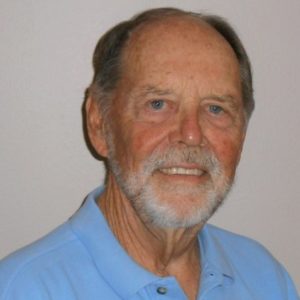 The U.S. Center for Disease Control (CDC) released an ensemble of statistical reports in mid-September, updating something they call “COVID-19 Pandemic Planning Scenarios,” designed, they say, to help inform public health officials who use mathematical modeling.
The U.S. Center for Disease Control (CDC) released an ensemble of statistical reports in mid-September, updating something they call “COVID-19 Pandemic Planning Scenarios,” designed, they say, to help inform public health officials who use mathematical modeling.
One scenario in particular, an “Infection Fatality Ratio” is exactly what it sounds like, now including “age specific estimates” for the first time. CDC previously reported COVID-19 fatality rates per 100,000 population, now they’re attempting to provide them for age groupings. And, yes, we’re talking about the COVID-19 pandemic again.
The figures upon which these updated estimates were based, CDC says, come from recorded fatalities of patients ranging to 79 years of age, from six regions of Europe. Reading further, CDC hedges, warning that their figures are not predictions, only best estimates, and that “uncertainty remains around nearly all parameter values. . . likely to change as we obtain additional data.”
First to catch the reader’s eye in the report, are the new CDC COVID-19 Infection Fatality Ratios in a “Best Estimate Scenario,” indicating that 0.003% of infected children 18 and younger, 0.02% of infected adults 20 to 49, 0.5% of infected people 50 to 69 years, and 5.4% of infected people 70 and older die of the infection.
Within those age groups, that works out to about three children in every 100,000 who are infected, 20 in every 100,000 20 to 49 year olds, 500 in every 100,000 50 to 69 year olds, and 5,400 in every 100,000 infected who are 70 or older, don’t survive.
Extrapolating from that, 50 and older retirees will be startled that their COVID-19 mortality rate could be as much as 166 times that of their 18 year-old grandchildren, at the same time their overall chance of surviving an infection is almost 95% (!)
The CDC report also speaks to asymptomatic COVID-19 infections, persons infected and contagious but who show no symptoms during the course of the disease. It estimates that approximately 40% of coronavirus cases are asymptomatic, and that asymptomatic patients are about 75% as infectious as symptomatic patients who display symptoms. CDC again warns, however, that relative infectiousness remains highly uncertain at this early stage of research.
CDC addresses other parameters of the pandemic in the report, one of the more important, viral transmissibility, the average number of people one person with SARS-CoV-2 is likely to infect in a population with no immunity from prior infections or interventions. CDC’s best calculated estimate is 2.5.
CDC also estimates that six days lapse between contact with the virus and development of symptoms, on average.
They report that the percentage of COVID transmissions occurring before symptoms appear in a pre-symptomatic patient – those who don’t initially display symptoms, but eventually do – in contrast to an asymptomatic patient who never shows symptoms. . .is about 50%.
And they report that about 40% of COVID-19 patients over 65 years of age are hospitalized, that 35% of hospitalized, over 65 COVID-19 patients need ICU care, and that about 26% of hospitalized, over 65 COVID-19 patients ultimately pass away from the disease.
Despite all this, there is controversy. Jeff Lancashire with the National Center for Health Statistics was quoted last August, “We don’t yet have enough stability in the 2020 data to calculate COVID death rates, though later in the year we should be able to.” And a prominent medical writer said in an August 14th Associated Press article, “there is not yet consensus among scientists or health officials about how deadly COVID-19 is for different age groups.”
The quote and article followed a widely shared social media posting alleging that the COVID-19 death rate for persons under 70 was only .04%, less than seasonal flu. Other epidemiologists quickly responded that even for those over 35, the evidence suggests COVID-19 is far deadlier.
The .04% figure may have come from calculations attempting to compare total COVID-19 deaths with all COVID-19 infections, including infections never tested and those undetected in asymptomatic people. Another Australian researcher was reported to have produced a mortality estimate for infected people under 70 that was near the social media posting, using the Infection Fatality Rate method and data from available death figures plus numerous antibody studies. The paper apparently hadn’t been peer reviewed or published in a journal as yet.
Ten months into the COVID-19 pandemic, the fruits of CDC’s labor may not provide us full confidence that we understand the threat yet, but it certainly underlines the seriousness of the situation and the need for retirees to seriously and carefully plan their exposure to unavoidable risks. □
CALIFORNIA SUPREME COURT SIDESTEPS THE CALIFORNIA RULE TWICE!
California public retirees can breathe easier for the second time in 60 days. The California Supreme Court once again sidestepped a weakening of the long-held California Rule in late September, and sent a Marin County lawsuit brought by labor groups back to the appellate level for resolution.
The California Rule is a legal court doctrine that says that California public employers have a contractual relationship with their employees, and retirement benefits cannot be reduced after hiring, without providing employees comparable replacement benefits.
We reported on a separate but similar California Supreme Court Alameda County case in last September’s NETWORK, and enthusiastically celebrated that the Court held the California Rule harmless, while upholding sections of the California Public Employees’ Pension Reform Act (PEPRA) that prohibit a variety of extra earnings from inclusion in final pension calculations. Those categories included stand-by pay, administrative response pay, callback pay and cash for waiving health insurance.
Although critics of the rule hoped the court would consider modifying it and open the door for reducing future pension benefits, the California Supreme Court said they saw no reason to reexamine the California Rule in these cases.
The Marin case was pending Supreme Court review when the Alameda ruling occurred. Similar to Alameda, it involved public employees arguing that rejection of long-standing policies permitting retirement benefit enhancements with overtime and other pay categories was unconstitutional. Without an official ruling, thousands of county employees were left hanging.
The California Rule has been a target of retirement critics for years, with as many as five related cases awaiting court consideration at times. While the labor organizations were not successful in keeping these pension supplements for future retirees, the rulings regarding the California Rule in the Alameda and Marin cases send strong signals that the Court isn’t interested in rethinking the California Rule. This relieves much of anxiety for public workers expecting the retirement they were promised when hired. □
PENSION FACTS – The Pandemic Has Vastly Changed Lives
By Chris Heiserman, Director
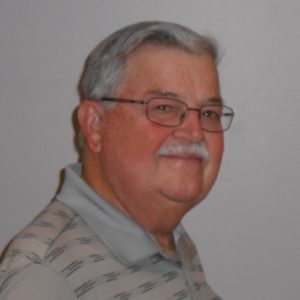 The coronavirus pandemic brought the global economy to its knees and has surprisingly engulfed the United States more severely and longer than anywhere else in the world. Raise your hand if you haven’t winced as network anchors regularly point out that we have 4% of the world’s population and more than 20% of the Covid-19 deaths, so far.
The coronavirus pandemic brought the global economy to its knees and has surprisingly engulfed the United States more severely and longer than anywhere else in the world. Raise your hand if you haven’t winced as network anchors regularly point out that we have 4% of the world’s population and more than 20% of the Covid-19 deaths, so far.
It’s almost numbing to realize that the economic collapse sparked by the pandemic is routinely compared to and found more damaging than some of the worst financial disasters in modern history: the Great Depression in the 1930s following the 1929 Stock Market crash; the Great Recession of 2008 and 2009; and the 2001 recession after the 9-11 terrorist attacks where travel and tourism employment fell precipitously.
We are in serious trouble and economic analysts, researchers and investigative reporters have begun assessing the damage and forecasting what a recovery to some semblance of pre-pandemic conditions might look like. The respected UCLA Anderson quarterly economic forecast released September 30 suggests California’s recovery may take more than two years. Even though they see some strength in the housing market and predict residential building permits could be back to normal rates by year’s end, they say the 7.2% drop in payrolls due to the pandemic will only be regained slowly – up 1.3% next year and 3.5% in 2022.
According to the forecast, the state’s economy benefitted greatly this summer from the federal distributions of checks to millions of taxpayers, extra jobless benefits and business loans through the $2.2 trillion CARES Act while the economy was almost completely shuttered. California’s unemployment rate, which was a healthy 3.9% in February before the pandemic shut down by April, is predicted to average 10.8% for the current year, then fall to 8.6% in 2021 and 6.6% in 2022.
This is not a rosy picture in the short term, especially since the Anderson report makes the assumption that Congress will approve at least another $1 trillion stimulus package this year to shore up the economy and aid the nation’s recovery. However, at the deadline for preparing our November NETWORK in mid-October, Congress and the President were still dithering over the details in the run up to the November 3rd election. The forecast also assumes there will be widespread availability of an effective coronavirus vaccine in early 2021.
The UCLA analysis notes that nationally the stock market has recovered somewhat on the backs of tech giants like Apple, Microsoft and Zoom Video; and home shopping and delivery services like Amazon, UPS and FedEx. However, labor-intensive parts of the economy that deal in goods and services are still reeling – airlines, hotels, cruise lines, theme parks, cinemas, restaurants and gyms. In relation to these sectors with generally lower paying jobs, the report noted much slower recovery for black people and for women than for white men. In August they said the national jobless rate for black men was 13.2% compared to 6.9% for white men; and 12.5% of black women were unemployed compared to 7.3% of white women.
“Most Unequal Recession in Modern History”
The Anderson report is not the only source that found huge disparities among sectors of society facing the economic turmoil of the pandemic. A Washington Post analysis of unemployment across the U.S. found that households at the top of the income ladder experienced a mild setback, while poorer families suffered a “depression-like blow” economically.
Even though the nation overall has recovered nearly half of the jobs lost in the spring, certain demographics have lagged behind, according to the report. Ben Bernanke, the Federal Reserve chief during the Great Recession, said, “It’s an even more unequal recession than usual. The sectors most deeply affected by COVID disproportionately employ women, minorities and lower-income workers.”
The Post analysis found that as the pandemic crisis deepened low wage jobs were lost at a rate of about eight times higher paying ones. It said the shift to working from home strongly favored the more educated. In addition, many lower level jobs may never recover since they are most at risk of being replaced by automation. As an example, the Pennsylvania Turnpike accelerated its plan to eliminate cash tolls, which erased 500 jobs at tollbooths.
Because of the seriously uneven impacts of the recovery on those being left behind, many economists and business leaders are hoping Congress will find a way to approve another large relief package. Even so, Mark Zandi, chief economist at Moody’s Analytics, had this sobering quote in the Washington Post feature: “There are very clear winners and losers here. The losers are just being completely crushed. If the winners fail to help bring the losers along, everyone will lose. Things feel like they are at a breaking point from a societal perspective.” □
TRACY SANDOVAL APPOINTED NEW SDCERA CHIEF EXECUTIVE OFFICER
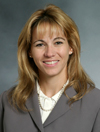 On October 15th, the SDCERA Board of Retirement unanimously appointed Tracy Sandoval to become Chief Executive Officer of the San Diego County Employees Retirement Association. She becomes the first woman to lead SDCERA as CEO in the retirement association’s 81- year history.
On October 15th, the SDCERA Board of Retirement unanimously appointed Tracy Sandoval to become Chief Executive Officer of the San Diego County Employees Retirement Association. She becomes the first woman to lead SDCERA as CEO in the retirement association’s 81- year history.
In an SDCERA news release, Board Chair Richard Tarte said: “After conducting a nationwide search which attracted over 80 applicants, Tracy was the Board’s unanimous choice to be SDCERA’s Chief Executive Officer. Her management skills, experience and financial acumen made her the Board’s top choice.”
With more than two decades of accomplishment in leadership roles within the County of San Diego, Ms. Sandoval currently serves as the Assistant Chief Administrative Officer. In her previous role as the County’s Chief Financial Officer, she was responsible for managing the County’s $6.5 billion annual budget.
“Tracy knows the San Diego County Pension System from her years of working with SDCERA Board members and staff. In fact, early in her career, she was an auditor with KPMG and audited SDCERA. She is respected and trusted by the Board and we are confident will serve our members well.” stated Vice Chair Skip Murphy.
She is a Certified Public Accountant (CPA), who graduated from the New Mexico State University with a degree in accounting. Sandoval and her family are long time Chula Vista residents. “I am honored to have been selected to lead SDCERA and look forward to serving the more than 45,000 current and future retirees and beneficiaries,” she said.
The executive search firm of Alliance Resource Consulting conducted the nationwide search for the new CEO. Sandoval is expected to start no later than December 11. SDCERA interim CEO and Chief Investment Officer, Stephen Sexauer said, “Tracy is an exceptional choice. She will be an outstanding leader for SDCERA.” □
RESDC VIRTUAL HOLIDAY FEST 2020
THURSDAY, DECEMBER 10, 2020 11 A.M.
RESDC approaches the end of the year when we normally hold our most important and popular membership event, the Holiday Luncheon and Annual Membership Meeting in mid-December. It typically attracts 350 to 400 attendees.
We’ve already announced that the COVID-19 pandemic forces us to cancel such gatherings to protect the well-being of us all, and we look forward to the next time we can reschedule them. Meanwhile we’re doing the next best thing, gathering together in computer-based Zoom sessions on selected dates for modified events.
Unfortunately we won’t have the usual highly piled plates of food, but we will still have a virtual gathering of old friends, gift drawings (must be present at the Zoom event to win!), entertainment, a keynote speaker, and for the first time we can include members who have moved to other areas of the U.S., even other countries.
The RESDC Virtual Holiday Fest 2020 will start at 11:00 a.m. on Thursday, December 10th via Zoom. For additional event details stay tuned to your email or the December NETWORK.
Register now by visiting www.resdc.net/events, where you can also find some helpful videos on how to use Zoom.
Hope to see you there! □
2021 SDCERA HEALTH PROGRAM ADMINISTRATIVE FEE INCREASE
At their September 17th meeting, the SDCERA Board of Retirement approved a staff recommendation that the calendar year 2021 health administrative fee, charged to retirees for management of their sponsored health insurance programs, be $5.20, an increase of 4% compared to the 2020 fee of $5.00. The fee applies to each health and dental insurance premium, of each retiree or spouse covered. For more information about the Administrative Fee, please contact SDCERA at 619-515-6800, Monday through Thursday 9 am—2 pm. □
CALIFORNIA SENIOR LEGISLATURE UPDATE
By Susan Mallett, CSL Assembly Member
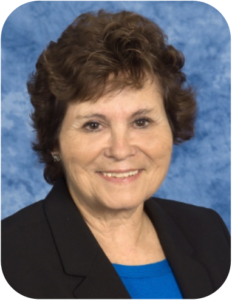 Warm greetings to RESDC members. I hope you are maintaining good health and some sanity as we continue to enjoy retirement despite the uncertainties of the COVID-19 pandemic. In the July NETWORK, I described the impact of the pandemic on the 2020 legislative proposals from the California Senior Legislature (CSL). Essentially the usual activities of this grassroots organization have been suspended and the four proposals picked up by legislators were returned to CSL for resubmission in 2021. All non-essential government travel in California has been cancelled for the year to include the CSL annual session held in Sacramento every October.
Warm greetings to RESDC members. I hope you are maintaining good health and some sanity as we continue to enjoy retirement despite the uncertainties of the COVID-19 pandemic. In the July NETWORK, I described the impact of the pandemic on the 2020 legislative proposals from the California Senior Legislature (CSL). Essentially the usual activities of this grassroots organization have been suspended and the four proposals picked up by legislators were returned to CSL for resubmission in 2021. All non-essential government travel in California has been cancelled for the year to include the CSL annual session held in Sacramento every October.
As we heed the public health “stay at home” advisory for older adults, most CSL members have become familiar with Zoom meetings as an effective way to stay connected. Eight regional caucus groups meet monthly to share information, resources and virtual events such as some excellent webinars on the State’s Master Plan for Aging website: www.chhs.ca.gov/home/master-plan-for-aging.
Additionally, CSL established statewide issue caucuses to align with the four main pillars of the Master Plan, Long Term Services and Supports (LTSS), Health and Wellness, Livable Communities and Economic Security and Safety. The Aging and Mental Health caucus met the final week of August with subject matter experts and interested CSL members for a presentation and discussion. A caucus to focus on the Village Movement, community-based solutions and services to enable older adults to age in place, met the third week of September. According to the Village Movement California, there are 48 villages in California of the 250 Villages in the nation. The website lists six village organizations within San Diego County and some of you may be far more familiar with this community concept than I am. Future issue caucuses are planned on Aging and Nutrition, Long Term Care Facilities, and other topics arising out of the Master Plan.
RESDC members may be interested in one or more of these topics as well. I would welcome your questions and/or comments. Additionally, both issue caucus leaders would welcome interested older adults who wish to attend a future Zoom caucus meeting. I can be reached through my email, smallett19@cox.net. I look forward to participating in future RESDC virtual events and hope you have given them a try as well. □
RECENT EVENTS
New Report: The Growing Burden of Retirement: Rising Costs and More Risk Increase Uncertainty. A new report from the National Institute on Retirement Security, a nonprofit research institute, finds that increasing costs for housing, health care, and long-term care are major burdens for seniors across the wealth spectrum.
The burden of preparing for retirement is increasing as workers face more risk and rising costs. Escalating housing, healthcare, and long-term care costs in retirement are creating retirement obstacles for Americans. Also, the shift from pensions to 401(k) plans has pushed more retirement risk onto workers.
The report finds that:
- Saving early and continuously during working years is difficult for many workers;
- Workers face market timing, interest rate, and longevity risks when they approach retirement age;
- While older Americans are the most likely to own a home, the number of Americans age 65 and older who are cost-burdened by housing costs has increased as more seniors are carrying mortgage debt into retirement;
- Healthcare costs continue to rise for all Americans, but these costs are higher for older Americans.
To access the report, visit: www.nirsonline.org/ .
Census Bureau Releases 2019 Annual Survey of Public Pensions. The U.S. Census Bureau recently released a supplemental unit and public-use file from for the 2019 Annual Survey of Public Pensions (ASPP). The ASPP provides revenues, expenditures, financial assets and membership information for defined-benefit public pension systems.
The highlights include:
- In 2019, 76.1% of state and locally administered defined-benefit public pension systems met or exceeded their actuarially determined contributions.
- State and locally administered defined-benefit public pension plans, on average, were 73.6% funded on a dollar-weighted basis.
- In 2019, 83.4% of the state and locally administered defined-benefit public pension systems reported a net liability, while the remainder had a surplus or had a net position equal to their total pension liability.
- State and locally administered defined-benefit public pension systems reported liabilities totaled $4.7 trillion compared to the reported assets of $3.5 trillion.
- For state and locally administered defined-benefit public pension systems, the mean reported assumed rate of return (discount rate) was 6.6% with a modal rate of 7.0%.
To access the survey, visit: www.census.gov/library.html . □
CHANGES COMING TO SEE’S CANDIES CERTIFICATES
See’s Candies announced recent changes to their candy gift certificates program. They have discontinued the sales of their one-pound paper gift certificates and are switching to plastic gift cards instead. If you still have some of the paper gift certificates in your possession, rest assured they will still be honored at all See’s Candies shops.
RESDC has a limited supply of gift certificates that we can sell to our members at $19.50 each which is a savings of $3.00 per pound. These gift certificates are good for one pound of candy. Our limited supply of gift certificates is available on a first come, first served basis. Please note that we only accept checks for purchasing See’s gift certificates. We are unable to accept cash or credit cards for See’s Candy certificate purchases at this time. The candy certificates are redeemable at any of the See’s retail stores for ready-packed or specially packed boxes.
If you would like to purchase gift certificates from RESDC, please address an envelope to RESDC, 8825 Aero Drive, Suite 205, San Diego, CA 92123. Enclose a check made out to RESDC for the number of certificates you would like at $19.50 for each certificate. Also enclose a business size (#10) self-addresses stamped envelope. If you order over five certificates, please put 70 cents postage on the self-addressed enclosed envelope. Please enclose a stamped envelope for every ten certificates with postage of 70 cents.
RESDC members are also entitled to a group discount at the two See’s Discount Stores: 3751 Rosecrans Street, San Diego, 92110; and 1830 Marron Road, Carlsbad, 92008. You must show them your RESDC Membership Card for the discount. Be sure to mention that you are a member of Retired Employees of San Diego County. The group discount price for a one-pound box of pre-packed chocolates is $18.90 if purchased in-person at one of the two stores listed above.
More details will follow as we transition into selling the gift cards to RESDC members. These new gift cards will be redeemable online or at any See’s Candies shops. □
NOVEMBER VIRTUAL GENERAL MEMBERSHIP MEETING VIA ZOOM
Date: Tuesday, November 10, 2020
Time: 10:00 A.M.
 RESDC is pleased to welcome Pete Blasi from My Senior Health Plan.
RESDC is pleased to welcome Pete Blasi from My Senior Health Plan.
MySeniorHealthPlan.com assists individuals who are turning 65 or individuals who are Medicare eligible. They will provide free plan comparisons and help you with the enrollment process all right over the phone!
Here’s a message from our presenter:
“We at MySeniorHealthPlan.com pride ourselves on our ability to provide honest and non-biased comparisons for senior health insurance. We understand there are many variables to consider when looking at the individual market for Medicare insurance, especially when measuring against a group plan you might have been on for years. We understand Medicare and Senior Health Insurance can be confusing and is a very important decision. For this reason, we will never pressure or rush you into selecting a plan, we take our time going over all your options to help you select the right plan for your needs.
Our team is committed to providing excellent service not only during the initial enrollment process but for all the years to follow!”
For more details on how to access Zoom and to register for this great event, visit us at www.resdc.net/events . □
BITS AND PIECES
Congratulations to John Melbourn and his wife, Helen, for celebrating their 65th wedding anniversary this month! When John mustered out of the Army, he and Helen Sporrer started dating. They married 18 months later. John was hired as an in-house engineering consultant by the Public Health Department in 1968 and he retired in 1993, serving 25 years as Public Health Engineer.
Janice Russell turned 82 in June! She retired in 1993 after 27 years service with San Diego Municipal Court. She stays busy in retirement with volunteer work and for the last year and a half she has served as President of the Elkonettes Club of the 1812 Elks Lodge of El Cajon where her late husband, Jim Russell, was a member for 24 years. In July, Janice checked off a long-time item from her bucket list by tandem skydiving with friends at the Otay Lakes facility. She sends regards to all her former co-workers at the court.
Barbara Wilson celebrated her 90th birthday in October! She retired from General Services in 1982 after 14 years with the County. After she retired, she traveled all over the United States with her late husband, Bob. After Bob passed, Barbara learned how to drive and operate their RV and she began taking girlfriends and grandchildren on RV adventures up and down the West Coast. A few years ago, she sold her RV and doesn’t travel as much as she would like anymore. When COVID is gone, she plans to volunteer again as a tutor at her local elementary school in Yorba Linda.
Editor’s Note: We would like to continue printing some Bits and Pieces items in this newsletter about our members.
If you have taken an interesting trip or have had an intriguing event happen recently, please let us know so that we can share your story with our members.
If you have reached an exciting birthday, or wedding anniversary, please call Karen Hazel, RESDC Editor, at (866) 688-9229. You can also write to Karen at RESDC, 8825 Aero Drive, Suite 205, San Diego, CA 92123. You can also send your information to us by email at: resdc@resdc.net . □
BOARD MEMBER PROFILE CHUCK BROWN
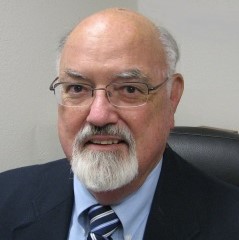 A member of the RESDC Board of Directors since December 2014, Chuck retired from the County Sheriff’s Department in 2012 with 26 years of service. He joined the County as a student worker in 1967, left county service in 1983, and returned in 2002. In both public and private sectors, he focused on Information Technology in support of business operations.
A member of the RESDC Board of Directors since December 2014, Chuck retired from the County Sheriff’s Department in 2012 with 26 years of service. He joined the County as a student worker in 1967, left county service in 1983, and returned in 2002. In both public and private sectors, he focused on Information Technology in support of business operations.
Chuck earned Bachelors (English) and Masters (Public Administration) degrees from San Diego State University. He chaired the Department of Computer Information Science at Coleman College for nearly three years and has taught at the University of Phoenix and West Coast University.
Besides volunteering with RESDC, Chuck is a founding member (1989) of the San Diego Concert Band and a member of the Historical Society’s City Guard Band and serves on the boards of both. He has also been a member of the Mercedes-Benz Club of America since 1973; and a member of the Association of Information Technology Professionals since 1980.
He and his wife, Carole, have been married for over 50 years and have two children and one grandchild. In addition to his own volunteering, Chuck supports Carole’s affinity for all things growing in the ground and her work with the San Diego Herb Guild, California Native Plant Society, and other local groups. They have been members of the Zoological Society for over 50 years. □
WELCOME NEW MEMBERS
Parvin Bagheri, Health & Human Services
Amor Mina Cajes, Probation
Carolina Gonzalez, Health & Human Services
Rosantina Jachimowicz
Russell A. Kruse, Sheriff
Luz R. Salway
Arlene L. Weber
The surviving spouse of a RESDC member is eligible for RESDC membership. For enrollment assistance, call (866) 688-9229. □
THE NETWORK is the official monthly newsletter of the Retired Employees of San Diego County, Inc. (RESDC), a private non-profit organization.
The information printed in THE NETWORK is believed to be from reliable sources. However, no responsibility is assumed by THE NETWORK for inaccuracies contained herein.
Business and Inquiries: Business matters and address changes may be recorded on our voicemail at any time, call (866) 688-9229. Please spell your name so the correct member record can be located.
Retired Employees of San Diego County, Inc.
8825 Aero Drive, Suite 205 | San Diego, CA 92123
Office Hours: 9 a.m. to 2 p.m. Monday through Friday
TELEPHONE: (866) 688-9229 Toll Free
FAX: (619) 688-0766
E-MAIL: resdc@resdc.net

